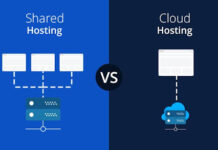Rental property taxes operate by a complex set of rules.
As a landlord, learning about rental taxes is beneficial even if you have your accountant or tax preparation software complete them for you. The software won’t necessarily tell you about the best practices for your tax return or clue you in on great deductions you missed.
One aspect you should be aware of is how the IRS treats expenses for rental repairs and improvements.
Repairs are operating expenses and therefore fully deductible in the year they occurred. Improvements, however, are capital investments and must be depreciated over several years.
One of the best tips for managing your repairs and improvements is to apply the safe harbors. These three provisions in the tax code allow you to deduct almost all maintenance expenses, regardless of their nature, if you qualify for them.
Below is an overview of the three safe harbors and how you can use them to save money and conquer tax season next year.
What Are the Safe Harbors?
The tax code distinguishes between repairs and improvements because they offer different kinds of benefits to your rental business.
Repairs are everyday operating expenses that only provide temporary service to your rentals. For example, let’s say you buy several bags of fertilizer for landscaping purposes. The fertilizer will benefit your property for a year, but then you’ll have to buy more to continue maintaining the lawn.
Improvements, on the other hand, offer lasting improvement or increase your property’s base value. For example, installing new flooring in your units permanently improves the cost basis.
While the concept is simple, the regulations for repairs and improvements can be complex in practice. To simplify the regulations, the IRS provides three “safe harbors.” If your expense meets the criteria and is ordinary and necessary, it is automatically fully deductible regardless of whether it’s a repair or improvement.
This is great news for landlords! By deducting improvements instead of depreciating them over time, you can save more money both now and when you sell the property, as deductions aren’t subject to recapture.
-
Safe Harbor for Small Taxpayers
If you’re a small landlord, the Safe Harbor for Small Taxpayers (SHST) is one of the most important parts of the tax code.
This safe harbor was designed to help small landlords manage the operating costs of their rental businesses. Under this safe harbor, you can fully deduct all maintenance expenses (repairs, improvements, etc.) from your taxable rental income.
There are three qualifications for the SHST:
- Building Value Limit – Each building must have an unadjusted basis (original cost, excluding the land) of less than $1 million.
- Expense Limit – Total expenses for maintenance, repairs, improvements, etc. must be less than $10,000 or 2% of the building’s unadjusted basis. This limit is applied to each building separately.
- Income Limit – Your gross receipts or income must not exceed $10 million during the previous three tax years.
If you qualify for the SHST, you don’t need to use the other two safe harbors or the typical regulations for repairs and improvements.
-
Routine Maintenance Safe Harbor
The Routine Maintenance Safe Harbor is also useful for small landlords. It has few restrictions—any landlord of any size can use it.
However, there are some stipulations to this safe harbor. To qualify as “routine maintenance,” an expense must be something done to keep a building or its systems in ordinary working condition. For example, cleaning, inspections, and part replacements are routine maintenance.
The expense must also pass the ten-year rule: the maintenance must be something you reasonably expected to do at least twice every ten years.
Finally, the expense cannot be a betterment or restoration. This means some improvements won’t qualify for this safe harbor.
-
De Minimis Safe Harbor
The third safe harbor, the de minimis safe harbor, has the least restrictions. You can use it to deduct any items less than $2,500.
This safe harbor is especially helpful for deducting low-cost items.
Applying the Safe Harbors
If you wish to use any of the safe harbors, you must communicate this to the IRS. You claim the SHST and de minimis safe harbors by filing an election you create with your tax return each year by October 15. These are optional and done on a per-building or item basis.
The Routine Maintenance Safe Harbor is not elective, so you don’t apply it every year. Instead, you adopt it as a method of accounting.
Keeping detailed records will help you should you choose to apply any of the safe harbors.
Understanding Rental Property Taxes
Tax season is no one’s favorite time of the year. However, learning about the tax regulations for rental property will ease your stress. By applying the safe harbors and using tools like property management software to organize your accounting, you will be well prepared to tackle tax season next year.


































